Shoot for the Moon. Even if you miss, you’ll land among the stars.
– Norman Vincent Peale
600 – whatever you expect from it, it will give you even more! In my opinion, the most beautiful distance for brevets and something you should definitely experience yourself.
Why, Nikica? Why?!
So far we have mastered brevets and riding at distances of 200, 300 and 400 km in general. Next is the 600, the last mandatory distance from the qualification series for the PBP or Paris-Brest-Paris.
But – regardless, there are several reasons why you should try a brevet of this distance, which you will conclude by yourself after reading this article. Moreover, if you’re not chasing the said qualifications, I’d advise you to skip the unpopular 400 altogether, which I find to be the hardest and least interesting brevet of the four and not really required as a preparation for the 600 – it’s enough that you’ve completed the 300. Although the 600 is significantly longer than the previous two brevets, the reason why it’s not so difficult lies in the rules, which allocate 40 hours for a successful brevet of 600 km. This serves as a good stepping stone towards multi-day rides, which is the basis for even longer brevets and/or bicycle trips.
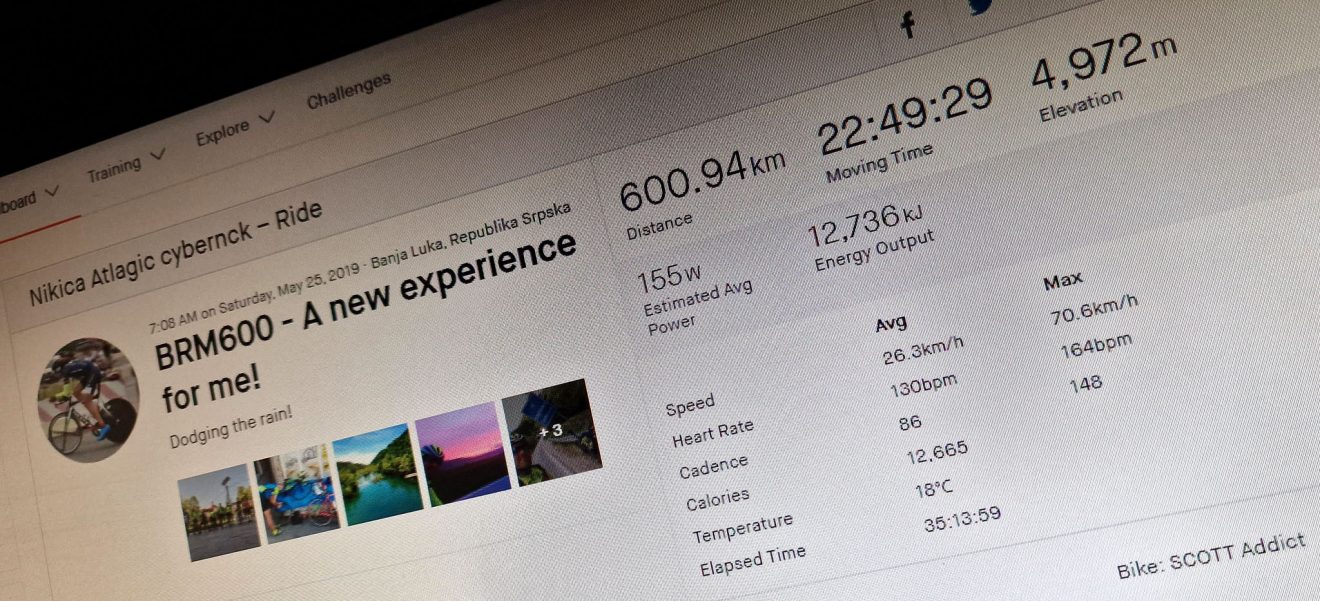
So, if the start is at 7 in the morning, you have until the next day at 11 in the evening to finish it successfully. Practically two full days and with very simple math – even with an average speed of 20 km/h – which is realistically very low regardless of the configuration of the terrain – you will spend a cumulative 30 hours on the bike. That leaves you with a nominal 10 hours for pauses, which means that, in addition to regular and unplanned stops, you can also do a solid overnight rest, unlike the 400, where it doesn’t make sense or you don’t have enough time.
Of course – even with the 600, you have to pay attention to the opening and closing times of checkpoints, because you can’t just take a single big break of 10 hours and respect the presumed riding pace at the same time.
Is it still a single ride then or not?
Hmm. Great question! I wondered that myself. Technically, it’s a single brevet, but in my opinion – if you sleep, it makes it practically two rides. Or more precisely – one ride in two stages. However, if we are not going to look at the situation only as “black or white”, then it is a little bit more difficult to define, because sleeping can mean spending 6 hours in a comfortable bed in a motel, while you can also take only a 30-minute “power nap” at some park bench. Anyway – as soon as sleep is introduced, it somehow does not represent a ride “in one go”.
Well… that’s IF sleep is thrown in. Oh, yes – by combining some experience in long-distance rides, spending time off-bike very efficiently and with the possibility of resisting sleep in one way or another, you can relatively easily make the 600 “in one go” and for many riders it is a kind of a challenge . Especially if you manage to finish it in 24 hours – then it somehow has weight to it, because it’s a unit of a day. You know, when someone asks you: “How far have you ridden in a day?”. Well, now you can give them a precise and literal answer 🙂

Joking aside, this already enters us into the domain of ultra-cycling, where such a discipline exists, including the World Championship in 24-hour riding. However, here we are talking about brevets, where the goal is to enjoy the ride and the route and at the same time to finish within the time limit, which, as we have already stated, is 40 hours for a 600 km brevet (and there is usually a few more kilometers add on top of it, because it is difficult to adjust the route so precisely).
What strategy should I have for the 600?
It’s best that I tell you a story of my first experience riding this distance. After riding the 400 a couple of weeks prior to it, the 600 was my longest brevet at that time and I had ridden it as part of the preparations for the premiere edition of the B-HARD brevet, which in 2019 was at a distance of 1000 km.
Like the previous brevets from the series, I also rode the 600 together with a colleague of mine. I was comfortable with his experience and company, he was comfortable with my pace and we both had a methodical approach to brevets, so we functioned really well – which is an extremely important aspect of riding a brevet, that is if you don’t plan on riding it on your own.
Miraculously, this six-hundred was only a few hundred meters longer than 600 km, but it also contained several significant climbs, including a pass at almost 1400 m above sea level in the last third of the route. Like the previous brevets, we also planned to finish this one expressly, but considering the distribution of the altitude profile on the route, our plan was to reach the town located at exactly the 400th km of the route between 10:30 PM and 11:00 PM. We would take a significant rest and resupply there – the only longer rest after short planned breaks in towns on the 220th and 330th km of the route. Also, we would decide on the spot whether to continue riding or stay overnight.
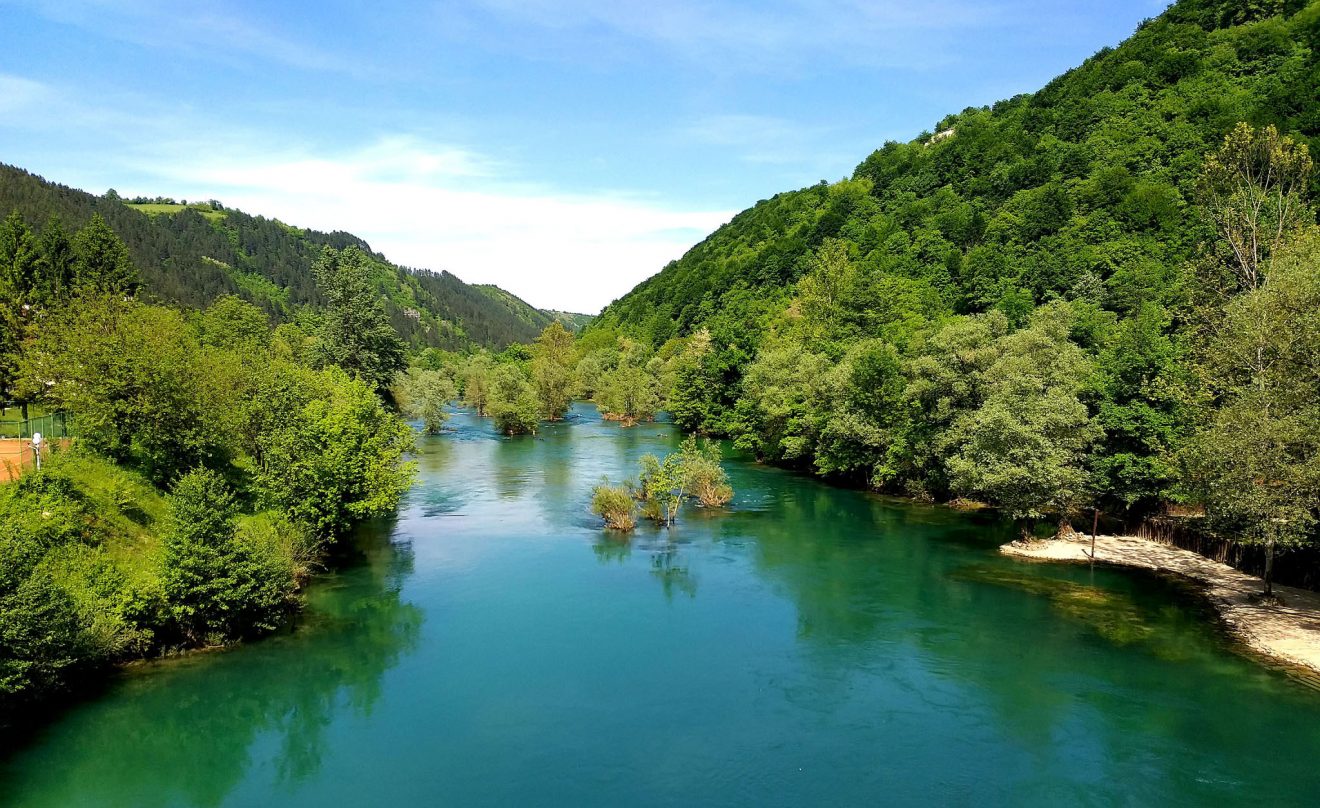
Of course, you must always prepare according to the conditions and the weather forecast. Calendar-wise, it was the end of May, with unstable atmospheric conditions and very cold mornings, but still with warm days. As we were potentially supposed to greet the next morning while descending from a mountain – in addition to arm warmers, leg warmers and vests, we also brought long-sleeved thermal jerseys, caps and some other warm things, as well as enough corn bars and handy travel food for the whole ride.
Ready, steady… go hard!
The first 100 km of the route was quite flat, so our pace was pretty strong and we were practically ahead of the planned hourly rate. The next 100 km was very tiring, both because of the very undulating terrain and because of the strong sun combined with abnormal humidity. Only once did I take my eyes off the road and, of course, I hit the only serious pothole on an otherwise very good road. So I had a rear tire blowout at exactly the 200th km of the route and we lost 20 minutes because of it. But hey, it happens.
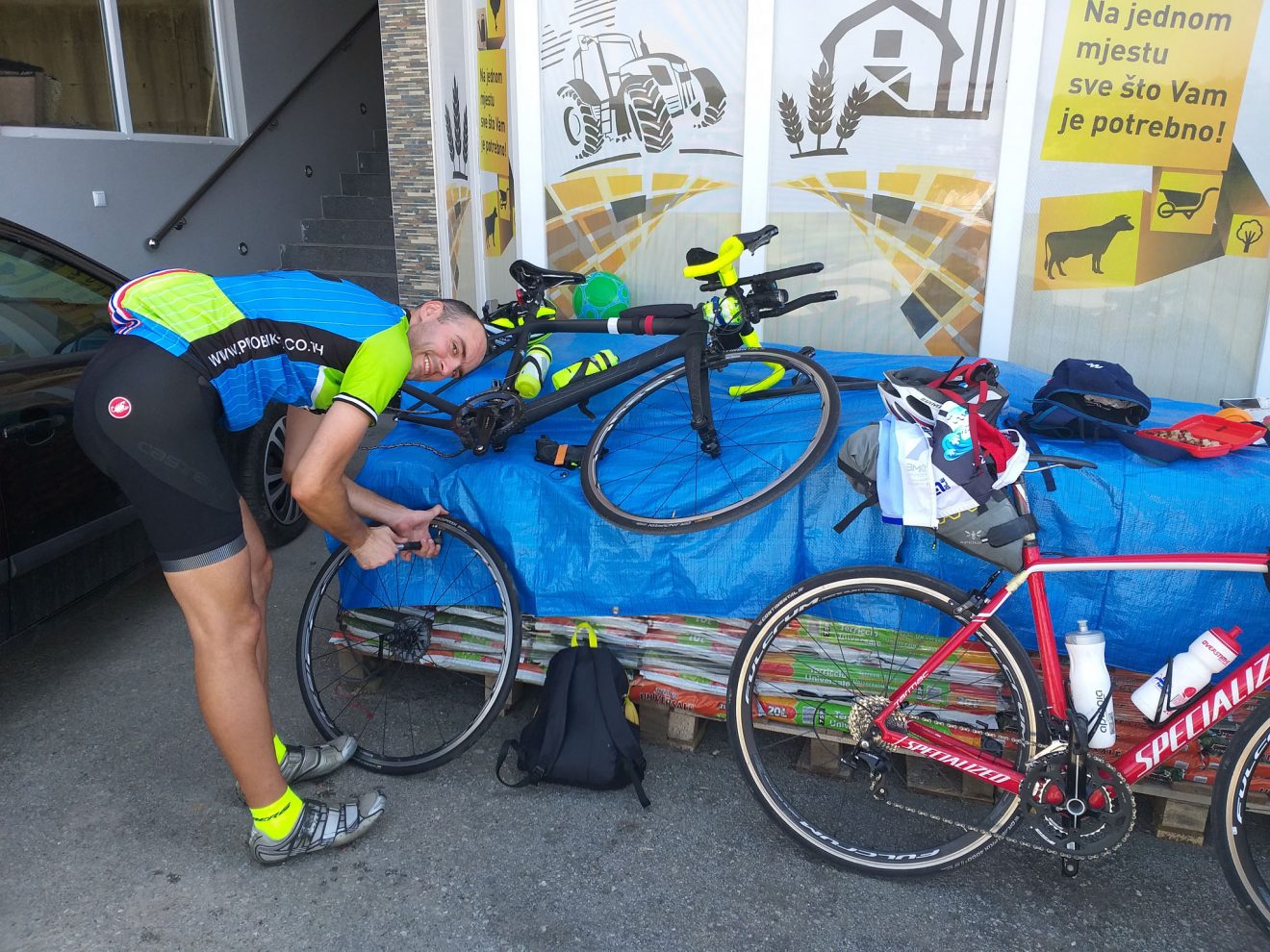
After the first planned break for food and supplies (because we knew that in the later course of the ride getting the food would be very questionable), with the noticeable effects of sunstroke and overcoming a more serious climb that brought us to a plateau – we could clearly see the reason for the humidity, which was an approaching storm, practically a black wall of rain, headed directly towards us – and vice versa. We didn’t really want to “play chicken”, because we knew we would lose in that duel, but there was absolutely nothing around us, no cover at all. That seemed quite worrying to us at the time.
However, in the stories that can only arise from such adventures – just as we collided with the front, we came across the only building in the area – an abandoned house with a restaurant under construction. The house was locked, but it had a separate smaller facility with toilets, which were luckily open. There we comfortably waited for the storm to calm down and we even met some cyclists from Poland, who were going in the opposite direction.
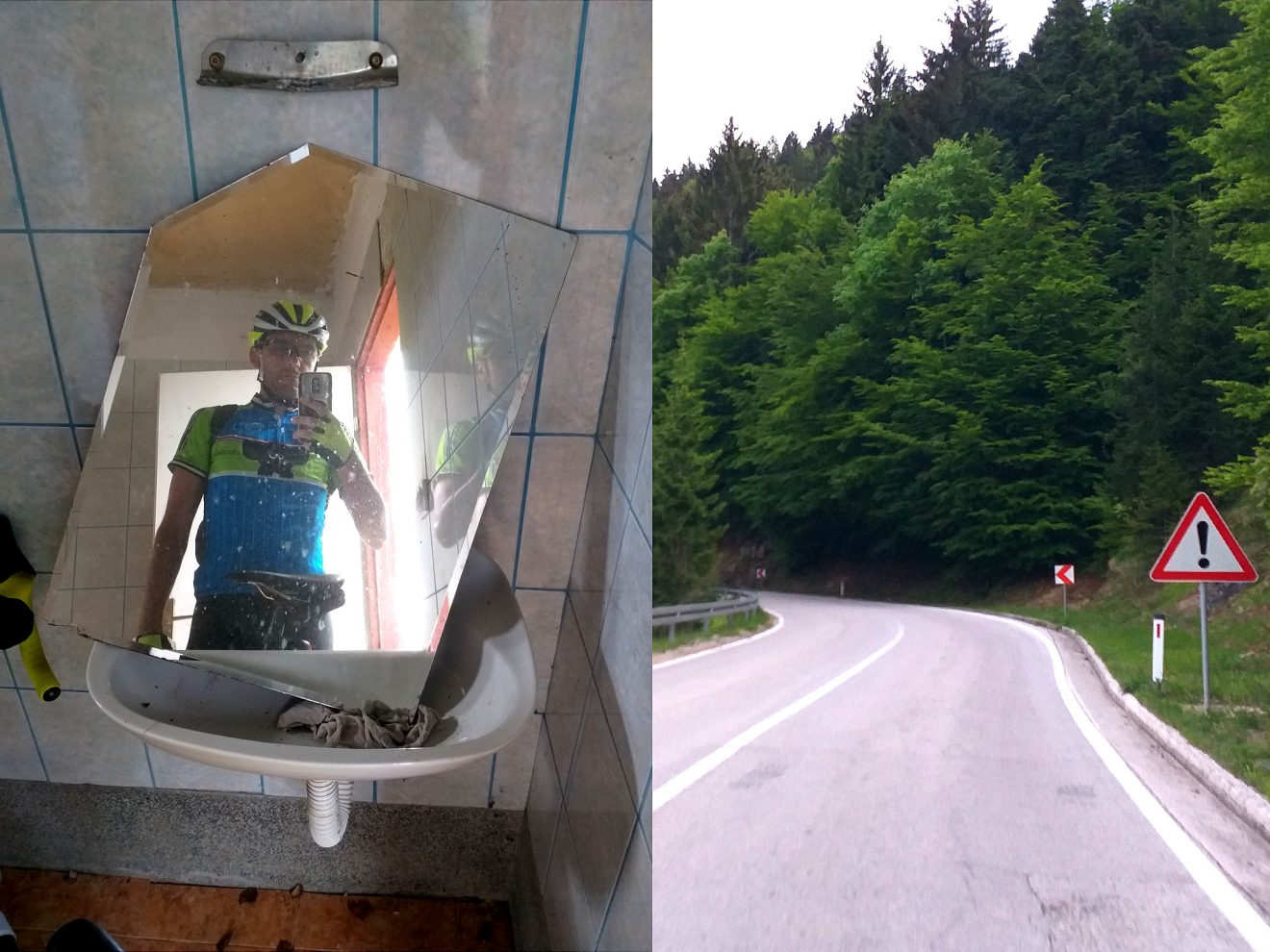
After that unplanned break, as well as a further couple of shorter breaks due to additional showers, a couple of mountain climbs and passes awaited us. Due to all these delays, we found ourselves greeting the night being sandwiched between two mountains, instead of being past them, so we had to make another additional break, to prepare for the night riding.
And? What now?
Practically, we were late one entire control point as compared to our plan and only at 11:30 PM did we found ourselves at the previously mentioned 330th km of the route. It didn’t present a big issue to me because I am a “night owl” and I was certainly excited about riding all night. But it was a real problem that the next 70 kms of the route were completely unknown to me at that time and also that at half past three in the morning at 400th km I would have absolutely no options either for supplies or for accommodation. In addition, after that 400th km, I would have to cross a large mountain range with two passes, all during the night and without food or drink.
On the other hand, my colleague thought pragmatically and I remember his words: “I’m not in favor of continuing riding throughout the night and I really can’t let you go on alone, so – you decide what you want us to do.”. The decision to abandon the original plan was not easy, but the facilitating circumstance was that we had an accommodation option. Namely, the other group, that was riding at a lower pace, was also a section late as compared to their own plan, so we ended up exactly where they planned to spend the night and thus we had a contact for accommodation, which we got into just a bit after midnight. .
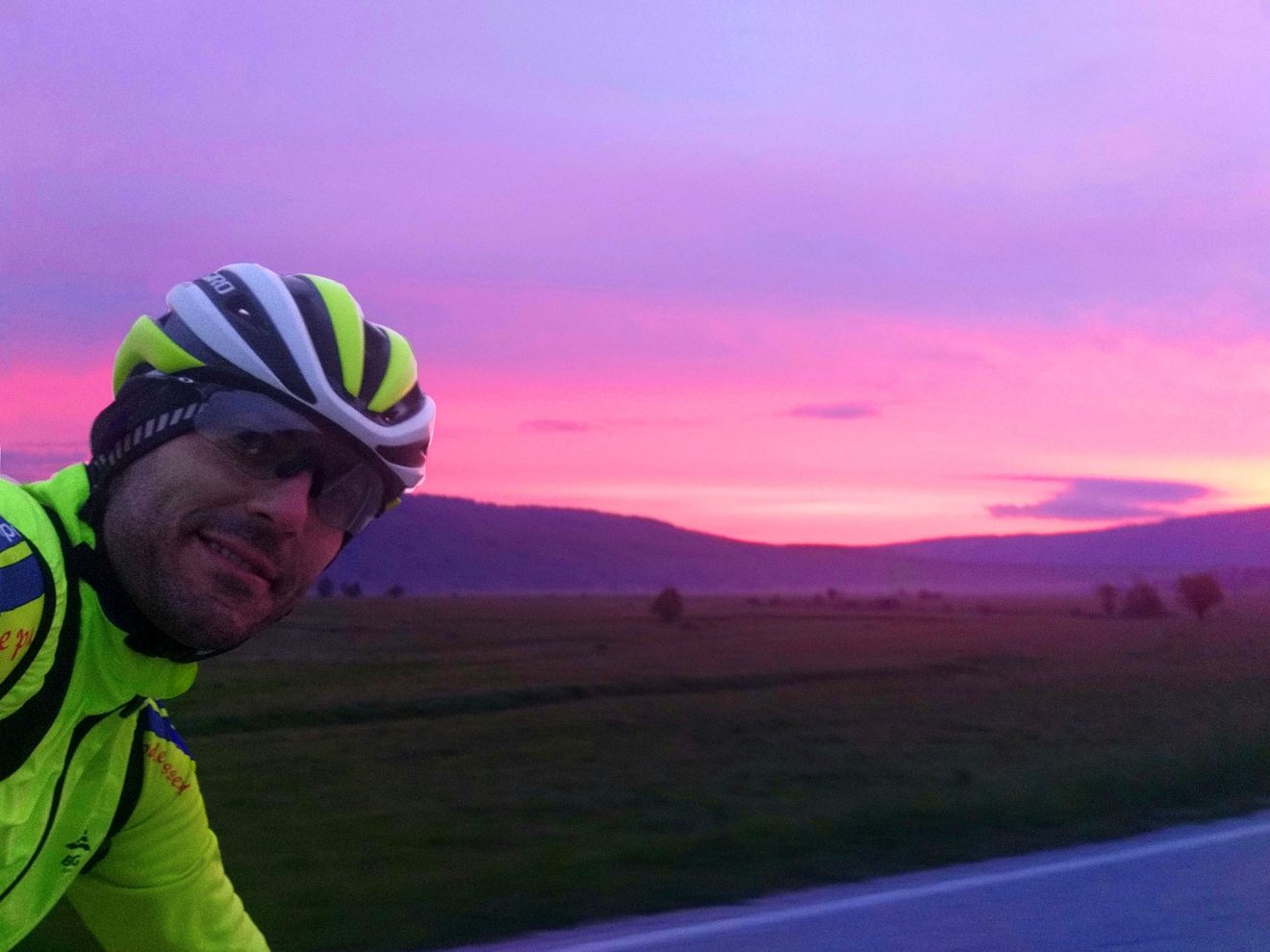
Good morning my neighbors!
After a short and mostly sleepless night (because I normally don’t sleep at this time, author’s note), we were back on the road at 4:45 AM, because we had to arrive at the checkpoint at the 400th km of the route within the time frame specified on the brevet card and we wanted to do it without risks.
What happened then, I really did not expect. Now we come to the part of the article that explains the opening sentence and the situation in which you can hardly find yourself in the normal course of life. With the haze, unreal colors of the sky just before dawn, fantastic terrains that were completely new to me and absolutely no one and nothing around, except for a couple of abandoned houses – the experience was surreal and it felt like we were on another planet. And all that while I was on my bike. Perfection!
After the checkpoint and breakfast at the 400th km, we crossed the mountain range in much better conditions than if we had gone there with a temperature around freezing point and, after several more interesting situations later, as well as avoiding more showers, we arrived at the finish line a few minutes after 6 PM. And not only that but I also gained a very important experience of such a short overnight stay between stages, which was of great importance to me for riding the upcoming B-HARD of a 1000 km. A couple of years prior to it I rode 1000 km in five stages, but that was with an escort and with much longer breaks between the sages, so this was still a completely new experience for me.
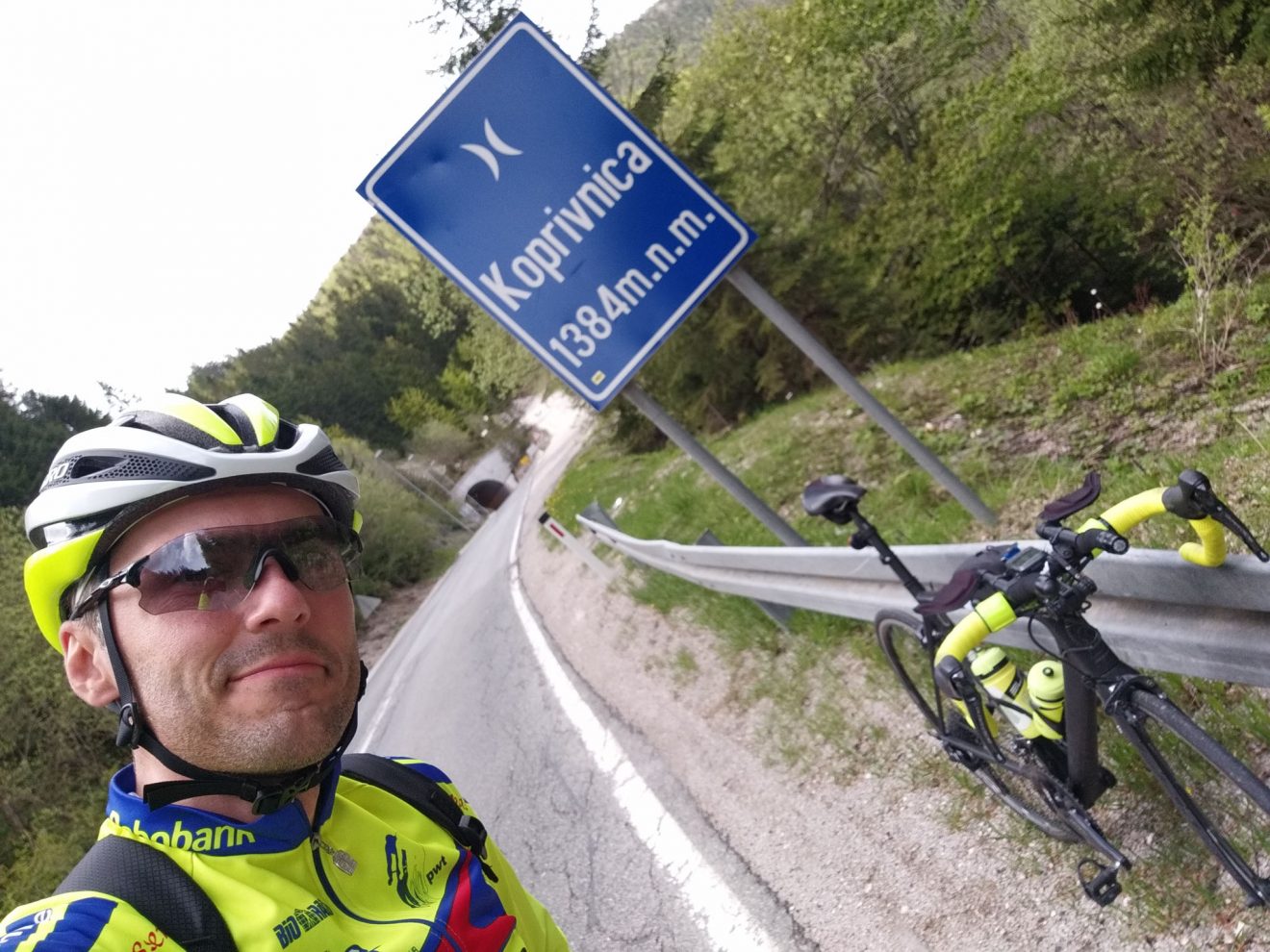
Summa summarum
So, we can draw several very important points from this story, which I have emphasized in previous articles, but with increasing length of the rides they certainly gain in importance:
- carefully study all aspects of the route (elevation distribution, refreshment points) and come up with a solid riding plan and, if possible, have a backup plan,
- look at the weather forecast and bring the appropriate equipment with you, as well as an adequate amount of travel food for “just in case” scenario,
- when you find yourself in an unplanned situation or in doubt, always carefully weigh all the options and try to think with a clear mind, without forcing it and being affected by different emotions,
- what I mentioned before as a very important circumstance, especially in the article on the 400 km brevet – always keep in mind the opening and closing times of the checkpoints noted in the brevet card and take into account how much time you need to reach the next checkpoint
- relax and enjoy the adventure!
In the end, I can only quote myself: “The 600 – whatever you expect from it, it will give you even more!”.
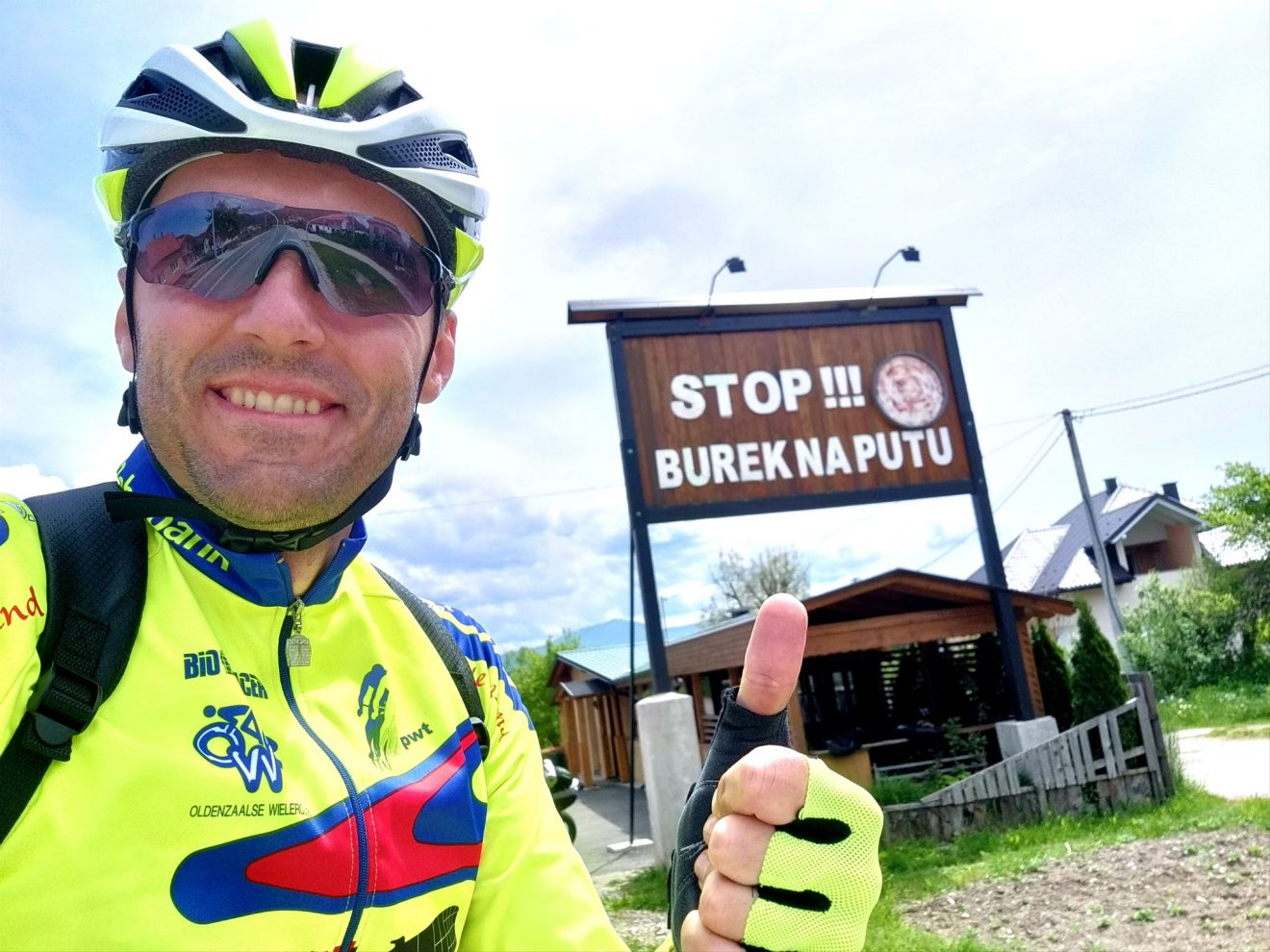
P.S. In case you were wondering – the other group had to start (or continue) riding as early as around 4 in the morning, in order to arrive at the mentioned control point just a few minutes before its closure. After that, they had more time leverage and they all also finished the brevet within the time limit.
P.P.S. If you are interested to give the 600 a try, I can wholeheartedly recommend B-600 within B-HARD Ultra Race & Brevet 🙂
Article about the incredible experience of driving a brevet of 1000 km – and not just any but B-HARD – is coming up next.
